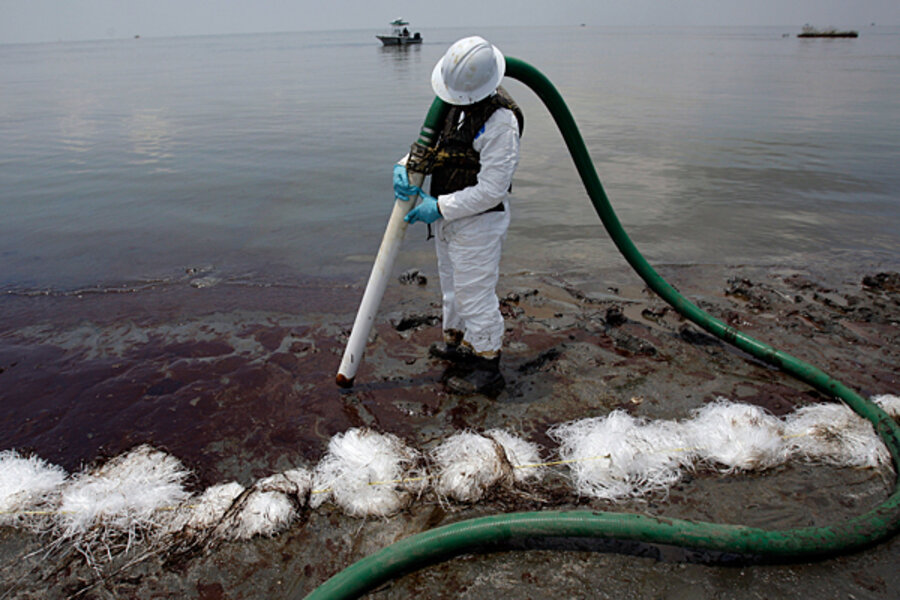Gulf oil spill: Study suggests latest US estimate was about right
Loading...
The Deepwater Horizon blowout sent at least 4.4 million barrels of oil into the Gulf of Mexico before the leak was sealed on July 15, according to researchers from Columbia University in New York.
The results compare well with the most recent government estimate, released Aug. 2, that 4.1 million barrels flowed into the Gulf between April 22, when the blowout occurred, and mid July.
It is important to pin down the flow rates, from the government's perspective as well as from a scientific perspective. The federal government will use the figure in any legal action it takes against BP and other companies involved in the incident, including fines. And scientists will have a better baseline from which to measure the short-term and long-term effects of the release on the environment.
The latest estimate and specifics about the approach used to reach it were published Thursday on Science Express, the online companion to the journal Science. The study represents the first oil-release estimate to appear in the formal, peer-review scientific literature.
"Because of the uncertainties involved, these numbers overlap and confirm one another at this point," says Timothy Crone, a researcher at Columbia University's Lamont-Dorherty Earth Observatory in Palisades, N.Y.
He cautions, however, that his figure represents a minimum estimate. It is based on videos of oil leaving the broken riser pipe. Those videos did not include what are thought to be significant amounts of oil leaking from elsewhere along the pipe, out of view of video cameras.
Unless more videos become available, however, it will be difficult to factor that additional oil into future estimates, he adds.
Dr. Crone and colleague Maya Tolstoy selected short segments of high-resolution videos of the leak before and after the well's riser was removed and analyzed the videos using techniques developed for measuring flow rates of superheated water and minerals from deep-sea hydrothermal vents.
These results represent a formal update to an initial estimate Crone made for National Public Radio in mid-May.
At that time federal officials issued a preliminary estimate of the blowout's flow rate of roughly 5,000 barrels (210,000 gallons) of oil a day, based largely on surface evidence of oil. But few in the scientific community believed the number.
Crone was one of three researchers enlisted to provide independent estimates of the flow. Using a similar technique on lower-resolution video, he estimated that the well was releasing at least 50,000 barrels a day.
By the end of May, a group of scientists convened by the Deepwater Horizon Unified Command released an initial estimate putting the flow rate at between 12,000 and 19,000 barrels a day.





